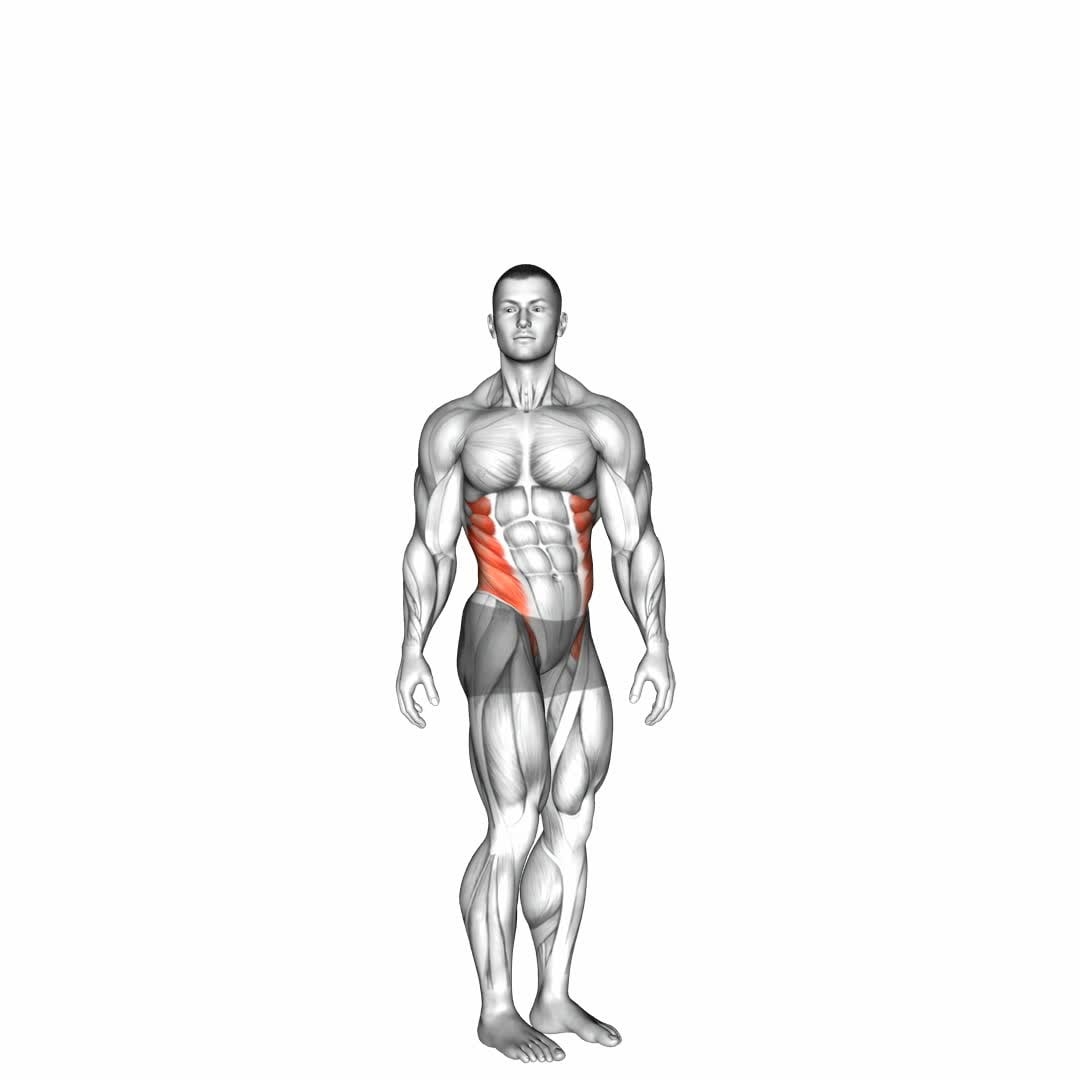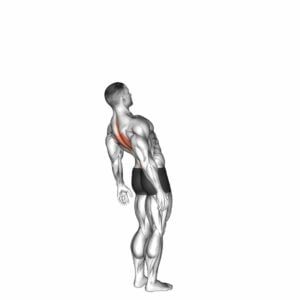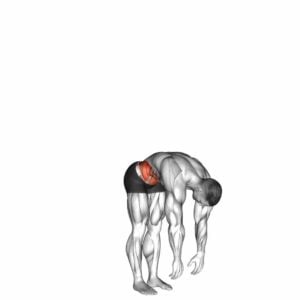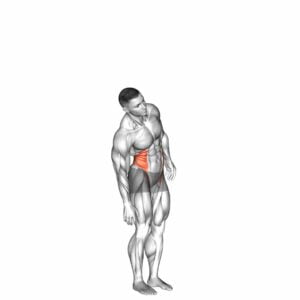Spine (Lumbar) – Rotation – Video Exercise Guide & Tips

Looking to strengthen your lumbar spine?
Watch This Exercise Video
In this comprehensive video exercise guide, you'll find a variety of rotation exercises specifically designed to target and improve the flexibility of your spine.
From beginner-friendly variations to advanced techniques, you'll learn proper form and technique to maximize results while preventing injury.
Get ready to enhance your spinal rotation and unlock a stronger, healthier back.
Let's dive in!
Key Takeaways
- Spine rotation exercises provide benefits such as improved flexibility, strengthened core muscles, enhanced spinal health, and increased range of motion.
- Proper form and technique, including warm-up, maintaining alignment, engaging the core, and avoiding common mistakes, are crucial for effective spine rotation exercises.
- Beginner-friendly spine rotation exercises should focus on safety, initiating movement from the core muscles, rotating within the individual's range of motion, and starting with gentle and controlled movements.
- Advanced spine rotation variations include Russian Twists with Weight, Standing Cable Rotations, Side Plank Rotations, and Woodchops, but it is essential to maintain core engagement and proper form throughout each exercise.
Benefits of Spine Rotation Exercises
By incorporating spine rotation exercises into your fitness routine, you can experience a range of benefits that contribute to improved flexibility, core strength, and overall spinal health. Spine rotation exercises involve twisting movements that target the muscles surrounding the spine, including the deep core muscles, obliques, and erector spinae. These exercises help to increase mobility and flexibility in the spine, allowing for better range of motion and preventing stiffness or tightness.
One of the main benefits of spine rotation exercises is improved flexibility. When you rotate your spine, you stretch and lengthen the muscles and connective tissues in the back, promoting increased range of motion. This can be particularly beneficial for athletes or individuals who participate in activities that require twisting or rotational movements, such as golf or tennis.
Additionally, spine rotation exercises help to strengthen the core muscles. The core muscles play a crucial role in stabilizing the spine and maintaining proper posture. By engaging these muscles through rotation exercises, you can improve your core strength and stability, reducing the risk of back pain or injury.
Furthermore, spine rotation exercises contribute to overall spinal health. The movements involved in these exercises help to lubricate the spinal joints, increase blood flow to the area, and promote better spinal alignment. This can alleviate discomfort or tension in the back and contribute to better overall spinal health.
Proper Form and Technique for Spine Rotation
To effectively perform spine rotation exercises and avoid injury, it's important to maintain proper form and technique. Here are some key tips to keep in mind:
- Warm up before starting: Before engaging in any spine rotation exercises, it's crucial to warm up your muscles and joints. This helps increase blood flow, improve flexibility, and reduce the risk of injury.
- Maintain proper alignment: Throughout the exercise, focus on keeping your spine in a neutral position. Avoid excessive arching or rounding of the back, as this can strain the muscles and put unnecessary stress on the spine.
- Engage your core: Your core muscles play a vital role in stabilizing your spine during rotation exercises. Make sure to engage your abdominal muscles and keep them activated throughout the movement.
- Avoid common mistakes: Some common mistakes to watch out for include twisting too forcefully, using momentum instead of controlled movements, and over-rotating the spine. These errors can lead to strain, discomfort, or even injury.
Beginner-friendly Spine Rotation Exercises
Try these beginner-friendly spine rotation exercises to improve your core strength and flexibility. Before you start, it's important to understand some modifications that can be made to ensure the safety of your spine during these exercises. If you have any pre-existing back conditions or injuries, consult with a healthcare professional before attempting these movements.
When performing spine rotation exercises, it's crucial to maintain proper form to avoid common mistakes that can lead to injury. One common mistake is using excessive momentum to rotate the spine, rather than engaging the core muscles. This can put unnecessary strain on the spine and increase the risk of injury. Instead, focus on initiating the movement from your core muscles, specifically the obliques, to ensure controlled and safe rotation.
Another common mistake is twisting too far and forcing the movement beyond your range of motion. This can also put excessive strain on the spine and result in injury. Listen to your body and only rotate as far as you can comfortably without any pain or discomfort. Over time, with consistent practice, your range of motion will naturally increase.
Remember to start with gentle and controlled movements, gradually increasing the intensity as your core strength improves. By incorporating these beginner-friendly spine rotation exercises into your workout routine, you can enhance your core strength and flexibility while minimizing the risk of injury.
Advanced Spine Rotation Variations
To challenge your core even further, incorporate advanced spine rotation variations into your routine. These spine rotation progressions will help you strengthen and stabilize your core muscles while increasing your rotational mobility. Here are four advanced core rotation exercises to try:
- Russian Twists with Weight: Sit on the floor with your knees bent and feet flat. Hold a weight, such as a dumbbell or medicine ball, in front of your chest. Engage your core and rotate your torso to one side, touching the weight to the ground. Return to the center and repeat on the other side.
- Standing Cable Rotations: Stand facing a cable machine with the handle at chest height. Hold the handle with both hands and step away from the machine, creating tension in the cable. Rotate your torso away from the machine, keeping your feet planted and your core engaged. Return to the starting position and repeat on the other side.
- Side Plank Rotations: Begin in a side plank position with your elbow directly under your shoulder. Lift your top arm towards the ceiling and rotate your torso, reaching your top arm underneath your body. Return to the starting position and repeat on the other side.
- Woodchops: Stand with your feet hip-width apart, holding a weight with both hands. Start with the weight above one shoulder and then rotate your torso, swinging the weight diagonally across your body towards the opposite hip. Return to the starting position and repeat on the other side.
Incorporating these advanced spine rotation variations into your routine will help take your core strength and rotational mobility to the next level. Remember to maintain proper form and engage your core throughout each exercise for optimal results.
Tips for Preventing Injury and Maximizing Results
To prevent injury and maximize your results, focus on maintaining proper form and engaging your core throughout each exercise. This won't only protect your spine but also improve flexibility.
When performing rotation exercises, it's crucial to move slowly and deliberately, ensuring that you're using the correct muscles and not relying on momentum. Start with lighter weights or resistance bands and gradually increase as your strength and stability improve.
Remember to warm up before starting any exercise routine to prepare your muscles for the workout ahead. Additionally, it's essential to listen to your body and not push through pain or discomfort. If you experience any sharp or lingering pain, stop the exercise and consult a healthcare professional.
Frequently Asked Questions
How Many Times a Week Should I Perform Spine Rotation Exercises?
To maximize the benefits of spine rotation exercises, it's important to perform them consistently. A general guideline is to aim for 2-3 sessions per week. However, it's crucial to listen to your body and avoid overexertion.
When performing these exercises, maintaining proper form and technique is essential. Focus on engaging your core muscles, keeping your back straight, and moving in a controlled manner.
Remember to consult with a healthcare professional before starting any new exercise routine.
Can Spine Rotation Exercises Help Improve My Posture?
Spine rotation exercises can definitely help improve your posture. By engaging the muscles in your back, these exercises promote better alignment and stability in your spine. This leads to a more upright and balanced posture.
Some of the best exercises for improving posture through spine rotation include seated spinal twists, standing twists, and supine spinal rotations. Incorporating these exercises into your regular routine can have significant benefits for your overall posture and spinal health.
Are There Any Specific Precautions I Should Take Before Attempting Spine Rotation Exercises?
Before attempting spine rotation exercises, it's important to take certain precautions. These exercises can offer various benefits, but it's crucial to ensure you're prepared.
Make sure to warm up properly and consult with a healthcare professional if you have any pre-existing conditions or injuries.
Additionally, maintain proper form throughout the exercises and avoid any sudden or jerky movements.
Can Spine Rotation Exercises Help Alleviate Lower Back Pain?
Spine rotation exercises can be beneficial for alleviating lower back pain. By engaging the muscles in your spine, these exercises help to increase flexibility, improve posture, and strengthen the surrounding muscles.
Some of the best spine rotation exercises include seated twists, supine spinal rotations, and standing trunk rotations. Incorporating these exercises into your routine can provide relief and prevent future discomfort. Remember to start with gentle movements and gradually increase intensity.
Always consult with a healthcare professional before starting any exercise program.
Are There Any Modifications or Alternatives for Individuals With Limited Mobility or Injuries?
If you have limited mobility or injuries, there are modifications and alternatives available for spine rotation exercises. These modifications can help you still benefit from the exercise while reducing strain on your body.
For limited mobility, you can try seated or supine variations of the exercise. If you have an injury, you should consult with a healthcare professional for specific alternatives that won't aggravate your condition.
It's important to prioritize safety and listen to your body's needs during these exercises.
Conclusion
In conclusion, spine rotation exercises offer numerous benefits including improved mobility, flexibility, and core strength. By maintaining proper form and technique, individuals can effectively target their lumbar spine and prevent injury.
Beginners should start with gentle exercises and gradually progress to more advanced variations. Remember to listen to your body and avoid any movements that cause discomfort or pain.
With consistent practice and proper precautions, you can maximize your results and maintain a healthy spine.

Author
Years ago, the spark of my life’s passion ignited in my mind the moment I stepped into the local gym for the first time. The inaugural bead of perspiration, the initial endeavor, the very first surge of endorphins, and a sense of pride that washed over me post-workout marked the beginning of my deep-seated interest in strength sports, fitness, and sports nutrition. This very curiosity blossomed rapidly into a profound fascination, propelling me to earn a Master’s degree in Physical Education from the Academy of Physical Education in Krakow, followed by a Sports Manager diploma from the Jagiellonian University. My journey of growth led me to gain more specialized qualifications, such as being a certified personal trainer with a focus on sports dietetics, a lifeguard, and an instructor for wellness and corrective gymnastics. Theoretical knowledge paired seamlessly with practical experience, reinforcing my belief that the transformation of individuals under my guidance was also a reflection of my personal growth. This belief holds true even today. Each day, I strive to push the boundaries and explore new realms. These realms gently elevate me to greater heights. The unique combination of passion for my field and the continuous quest for growth fuels my drive to break new ground.







